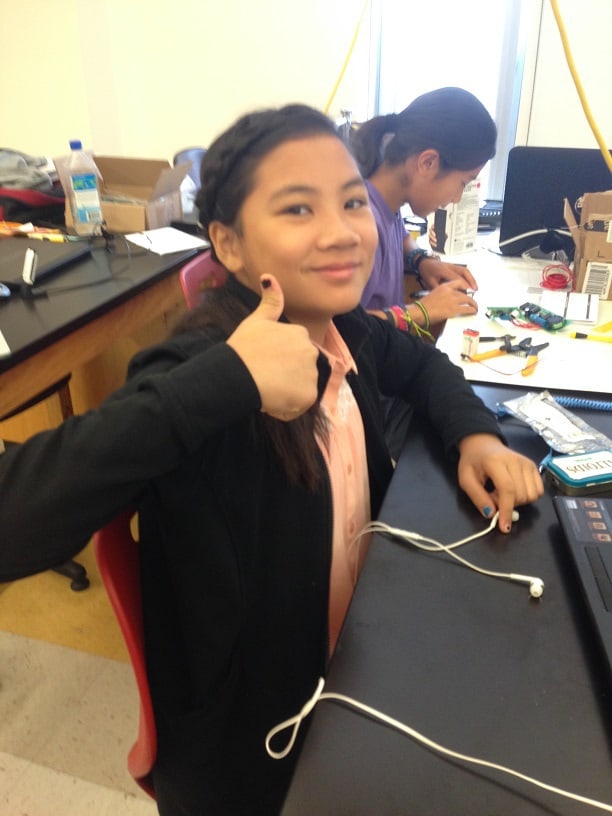TV-B-Gone
The TV-B-Gone is a remote that can turn off almost any television and it can turn that television back on. Since it is a starter kit, it’s also very easy to build, and it only takes about 4 hours to make.
The TV-B-Gone remote has a process in how it works. The 8 pin socket has the microcontroller attached to it, which contains the 230 codes of almost every television that exists. Once you press the button, it allows the current to flow, and the microcontroller does a trial and error, and goes through all 230 of the codes to see which one will turn off the television. It takes a few seconds for it to turn off because it has to do a trial and error first.
The instructions are your key to building it, and you must read them carefully. It is very important to read all of the instructions before starting. For each piece, they tell you where to attach it, how to attach it, and how to solder it.
Below, you will find pictures and explanations for what each piece does. The terms (such as and oscillator or transistor) are written in blue.
Although the instructions are very helpful, they don’t tell you what the pieces do, they only tell you what the name of the piece is. I had to research from other websites how these parts and the PCB work. The different parts that I learned about were the capacitor, resistor, transistor, the PCB, infrared LEDs, and the ceramic oscillator.
PCB stands for “printed circuit board”, and is the circuit board that actually holds all of these pieces. On the back of the board is a copper track; instead of having a jumble of wires, you just solder the pieces in the right places to make a connection to the PCB.
A resistor is a tiny device decreases the current by a specific amount.
The transistor may be a very small piece, but it does a lot of work. It controls the current; the amount of energy, and it can turn the current on and off.
The Infrared LED, or Light Emitting Diode is used to connect to the receivers of the televisions that you turn off, because the television’s receiver detects infrared. It also gives out light that you can’t see with your own eyes, you would have to use a camera to find out if the lights work or not.
The capacitor is like a battery, and it stores electricity. It has 2 pieces of conducting material, and a dielectric material in between it, which is a poor conductor.
The ceramic oscillator sends out frequencies for the LEDs. It sends out all of these random frequencies until the television recognizes one of those frequencies sent from the infrared LEDs.
A diode is a semiconductor. One end of the diode is called an anode and the other end is called a cathode. The cathode will always be identified on the diode, the gray line on the diode shows represents the end that has the cathode. The current flows one way ; from anode to cathode. Since it only flows one way, it prevents the current from flowing the wrong way. A diode doesn’t have a negative end nor a positive end. If you place a diode the wrong way, no current will flow unless you give it a certain amount of voltage. A diode has a lot of resistance on one end and a low resistance on the other end. The voltage is higher on the anode and lower on the cathode, which makes it act like a low value resistor and the current will flow, if the diode is placed the other way, it has a higher resistance and the current won’t flow (http://www.mikroe.com/old/books/keu/05.htm). These light emitting diodes have a crystalline substance that emits light when a current flows through it.
A current is very important to have, not just in the remote, but even in our daily lives. There are currents in all items that require electricity (like a lamp or a refrigerator). A current is a flow of electrons moving from negative to a positive power supply.
The microcontroller holds all 230 of the codes for different televisions. When you press the button on the remote, it goes through all of these codes, trying to find the code that will turn off the television.
MintyBoost 3.0
The MintyBoost 3.0 is a portable charger that charges anything with a USB cord. It is an easy to build starter kit that will take only two hours to make.
The MintyBoost has a short process. Whatever device you charge is a resistive load (explained on the next page), so it will take as much power as it can from the charger. The batteries heat up a lot, because it gives so much power to your device. The inductor takes the input of the 3 volt batteries and lets it output 5 volts through the USB port.
This required using a multimeter and a lot of desoldering. The multimeter calculates voltage, current, and resistance. It needed an output of about 5 volts, and I had no trouble with that.
Casing the MintyBoost was easy. An instructor cut a slot for the USB port. After the tin can was cut, I just had to put the double sticky sided foam board on the circuit board and the battery holder.
The different parts that this MintyBoost used were an inductor, a diode, a resistor, a capacitor, and a microcontroller.



